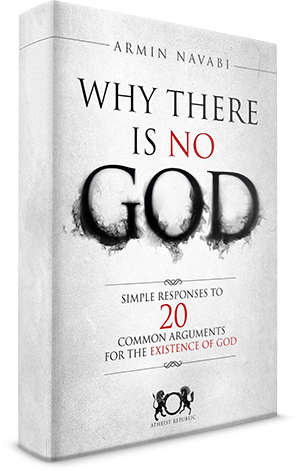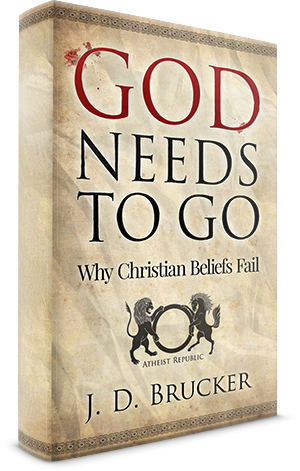
Most people, and I am sure all atheists, will be aware of the religious conflicts that have plagued the world for millennia. Some contemporary examples include the Shia-Sunni conflict in the Middle East, the Christian-Muslim feud in Africa, and of course the ever-simmering battle between Arab and Jew in Israel.
Ever since recorded scriptures, there have been wars and genocides carried out in God’s name. For example, the Amalekite Genocide saw the slaughter of every man, woman, child as well as livestock. The Muslim-Mongol slaughter of Hindus in the Kush region is also on record; Christians and Muslims fought for centuries during the Crusades. Even Hinduism, a significantly older, arguably more peaceful religion than the Abrahamic faiths, is not free from conflict -- there are numerous contemporary cases of Hindus in conflict with Muslims in India, for instance. There are even records (albeit few) of conflict within Buddhism, a religion known for its nonviolent philosophy.
However, all of these religion-driven atrocities, as terrible as they must have been for those involved, are often overshadowed in the contemporary mind by what many theists refer to as “atheist genocides”. These include the genocides that took place in Stalin’s Russia, in Hitler’s Germany, in Mao’s China and in Pol Pot’s Cambodia. The theists’ implication is that these genocides arose because the regimes and their leaders were atheist.
But to what extent were these regimes nonreligious or atheist? Were they perhaps covertly religious ones? I explore this possibility further.
Religion is defined in the Oxford English Dictionary in various ways, the most exhaustive being:
“belief in or acknowledgement of some superhuman power or powers (esp. a god or gods) which is typically manifested in obedience, reverence, and worship; such a belief as part of a system defining a code of living, especially as a means of achieving spiritual or material improvement”.
We can build on on this definition by recognising a religious blueprint or formula that has been adopted over the ages. In Judaeo-Christian accounts, for example, Moses established a system of ten decrees (‘Commandments’) devolved from a transcendental invisible universal force that spoke only to him. Thereafter, Moses controlled every aspect of his people’s lives, from their sexual behaviour to their spoken words. Speaking against or denouncing him, as well as adultery, was punishable by death. Moses, through his self-proclaimed direct link to God, became the superhuman element in this religion. His people were forced to obey, revere and show adoration for God (which of course was simply a projection of Moses himself).
This religious blueprint can be summarised by its injunctions to enforce strict rules; to psychologically threaten citizens; to stifle dissent; to punish harshly; to control free speech; to create a common enemy; and to enforce adoration, obedience, reverence and worship of a supreme leader.
If we now examine the above totalitarian regimes and their “atheistic genocides”, we find that not only do they match our definition of religion in many respects, but that they also adhere closely to the religious blueprint exemplified by Moses. During Stalin’s dictatorship, for example, he enforced total control over the media, the arts and freedom of speech. Only those cultural processes that aggrandized Mother Russia and her supreme leader were sanctioned. Stalin effectively became the leader of what appears to have been a personality cult: the artists and writers, musicians, composers, filmmakers and media magnates could only create that which venerated Stalin and his ideas. Thus, he became the superhuman element of the Stalinist “religion”, and citizens were forced to acknowledge, obey, revere, and show adoration for Stalin. It was enforced by Stalin because he considered it morally preferable to that found in capitalist societies. This behaviour is immediately reminiscent of religion with it stated objectives of achieving spiritual or material improvement.
Hitler created a state-sponsored, eugenically-motivated sociopolitical system. This resulted in an attempted genocide of the Jews, and the extermination of the disabled, the mentally ill and the old. Hitler believed that blonde-haired, blue-eyed Germans were a superior race. In order to achieve racial purity, all other races would have to be “cleansed” from Germany. Hitler promoted the idea of die Herrenrasse (the Master Race), which was to be made up of Übermenschen (Superhumans). As with Stalin, Hitler became the superhuman element of his Hitlerist “religion”; citizens were forced to acknowledge, obey, revere and show him adoration. The media were, again, controlled.
Mohammed, Pol Pot, Mao Zedong, Saddam Hussein -- in some way or another, all their regimes fit the definition of a religion or can be recognised in the religious blueprint outlined above. Sometimes the superhuman element is a metaphysical concept used by a man like Moses to gain control over his people, and sometimes the superhuman element is a man himself, like Stalin or Hitler, or a goal to achieve, like a Master Race.
Religiously enforced policies, top-down structure, harsh punishments and limits on freedoms all contribute to total control over a peoples -- that’s what religion entails, and that’s what totalitarianism entails. Totalitarian regimes are modelled on religious dogma, and there is categorically no basis to the claim that atheism has made any contribution to the atrocities committed by such regimes.




























